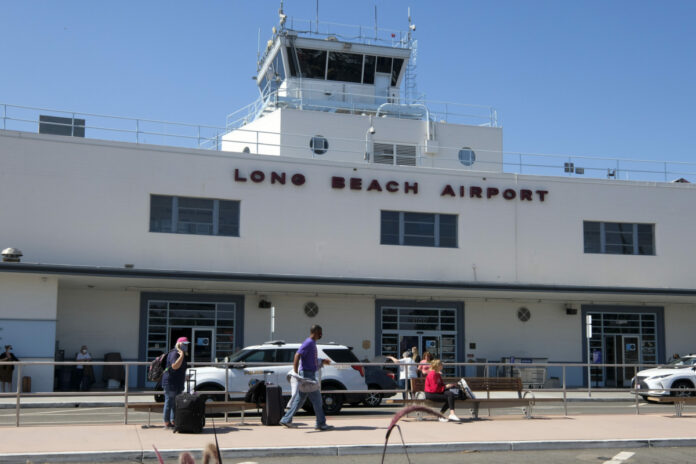Twenty years ago, the mantra from officials in South Bay cities opposed to various expansion proposals for Los Angeles International Airport was to limit growth at LAX and expand operations at the county’s regional airports.
In July, that vision mostly came to pass, though not through some grand master plan.
For the first time since the spring of 2021, passenger counts at LAX were virtually flat in July compared to the same month last year as domestic passenger traffic fell and growth in international passenger traffic slowed dramatically.
Meanwhile, passenger counts at the three regional commercial airports serving Los Angeles County – Ontario International, Hollywood Burbank and Long Beach – all rose by double-digit percentages, led by nearly 20% growth at Burbank.
Overall, just over 9 million passengers went through the gates at the four airports in July, up 2.7% from the same month last year, but still down 8.4% from pre-pandemic July 2019.
LAX stagnates
At LAX, nearly 7.32 million passengers went through the terminal gates in July, up a mere 7,000 passengers, or 0.09%, from last year.
Domestic passenger traffic fell 1.8% to 4.95 million, the fourth such drop this year; overall this year, domestic passenger counts are down 0.08% from the first seven months of last year.
Officials with Los Angeles World Airports, the city agency that runs LAX, have been reluctant to provide detailed comment on this decline, noting only that airlines have made adjustments to their flight schedules. Initially, they hoped this decline was temporary. But it has persisted, with no signs of a trend reversal.
As a result, domestic passenger traffic is still down more than 16% from pre-pandemic levels.
Up until July, the slight year-over-year declines in domestic passenger traffic were more than offset by sharp rises in international travelers. But in July, that international growth rate slowed from double-digit percentages to just 4.4%.
Looking ahead, the international passenger growth rate could pick up again as Chicago-based carrier United Airlines last month resumed flights between Shanghai and LAX for the first time since the pandemic hit. Initially, four flights a week are planned, though that’s scheduled to step up to daily flights by the end of next month.
Robust growth at regional airports
The story is much different at the regional airports, especially Hollywood Burbank, where in July 639,000 passengers went through the gates, up 19.8% from the same month last year. That was the fastest year-over-year growth rate among the four airports. Overall, the airport in July had nearly 18% more passengers than pre-pandemic July 2019.
Ontario International wasn’t far behind as its 666,000 passengers in July was up 14% from the same month last year and nearly 35% from pre-pandemic July 2019.
“Our run of year-over-year growth now stands at 41 months as our airline partners and air travelers continue to show their strong preferences for Ontario International Airport,” said Atif Elkadi, chief executive of the Ontario International Airport Authority. “Airlines are offering more seats to more places to meet the increasing demand for air travel in the Inland Empire.”
Ontario International also draws a significant portion of its traveler base from the San Gabriel Valley in Los Angeles County.
Long Beach Airport also posted a double-digit percentage gain in passengers in July – its count of 381,000 was up nearly 12% from the same month last year and edged out May’s total for a new all-time monthly high for passengers.
“July’s commercial passenger traffic adds momentum to the record-breaking year we’re having at Long Beach Airport,” said Cynthia Guidry, Long Beach Airport’s director.
Cargo’s continued gains
Meanwhile, air cargo tonnage handled at the four airports continued its recovery trend from last year’s slump, rising 9% in July to 281,000 metric tons when compared to the same month last year.
Roughly 98% of the cargo tonnage handled was at two airports: LAX and Ontario. LAX posted a year-over-year gain of 8% while Ontario saw again of 11%.
“Commercial freight volume climbed significantly in July while Ontario’s year-to-date performance continued to show our airport is a hub of choice for shippers and cargo owners,” Elkadi said.
Cargo tonnage surged at the airports during the pandemic, with Ontario handling a spike in consumer goods and LAX a spike in pandemic-related supplies. That surge subsided in late 2022 and through most of last year. But this year, tonnage has picked up again.

